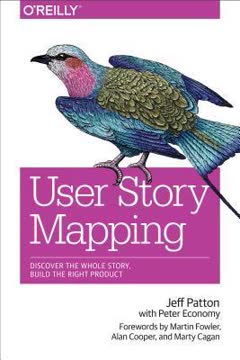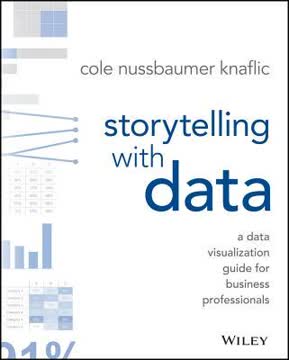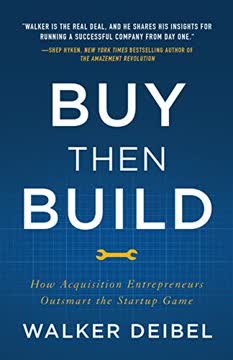Key Takeaways
1. Product Management: The Art of Delivering Customer Value
Done properly, the products let the customers be awesome.
Customer-centric approach. Product management is fundamentally about representing the customer within a company. PMs must understand customer needs, set a vision, prioritize opportunities, and work cross-functionally to deliver products that solve real problems. They manage products, not people, using soft influence and effective communication.
Key responsibilities:
- Identify customer needs and market opportunities
- Define product vision and strategy
- Prioritize features and create roadmaps
- Collaborate with engineering, design, marketing, and other teams
- Analyze data and gather customer feedback to iterate on products
Successful PMs balance business goals with customer needs, technical feasibility, and design constraints. They must be adaptable problem-solvers who can navigate ambiguity and make difficult tradeoff decisions.
2. Understanding Your Company's Core Purpose and Target Customers
"Why" is at the core of the Golden Circle because it's the most fundamental thing you need to understand about a company.
Define your "why". Understanding a company's core purpose - its "why" - is critical for effective product management. This purpose should drive all product decisions and differentiate the company from competitors. For example, Apple's "why" is challenging the status quo through innovative, user-friendly design.
Know your customers:
- Create detailed user personas with demographics, goals, pain points
- Identify key use cases and customer journeys
- Analyze the total addressable market and buyer personas
- Understand how customers make purchasing decisions
Use frameworks like the Business Model Canvas to map out key customer segments, value propositions, and channels. This deep customer understanding enables PMs to build products that truly resonate with target users.
3. Identifying and Validating Product Opportunities
The plural of 'anecdote' is not 'data.'
Data-driven opportunity identification. PMs must systematically identify and validate product opportunities using both quantitative and qualitative methods. Avoid relying solely on intuition or anecdotes.
Opportunity identification methods:
- Analyze product usage data and metrics
- Conduct customer interviews and surveys
- Evaluate competitor products
- Brainstorm with cross-functional teams
- Consider industry and technology trends
Validation techniques:
- Run A/B tests on prototypes
- Create simple MVPs to test core assumptions
- Conduct usability studies
- Analyze cohort data on feature adoption
- Calculate potential business value vs. cost
Prioritize opportunities based on customer impact, business value, and feasibility. Be willing to kill ideas that don't validate well - it's better to learn early than waste resources building the wrong thing.
4. Crafting a Compelling Product Vision and Requirements
Stories are the oldest form of entertainment we have, and scientists have argued that narrative experiences are the basis for far more of our lives than systematic logic.
Storytelling for alignment. Craft a compelling product vision that inspires the team and aligns stakeholders. Use storytelling techniques to paint a vivid picture of how the product will improve customers' lives. Create a concise "elevator pitch" that clearly articulates the product's value proposition.
Key components of product requirements:
- User stories and scenarios
- Prioritized feature list
- Success metrics and KPIs
- Designs and wireframes
- Technical requirements and constraints
- Launch plans and timelines
Write clear, concise product requirement documents (PRDs) that focus on the "what" and "why", not the "how". Use vivid user scenarios to build empathy for customers. Treat the PRD as a living document, iterating as you learn more throughout development.
5. Collaborating with Design to Create Exceptional User Experiences
Minimum doesn't mean bad. Your product is still going to be designed and engineered well, tested thoroughly, and, most importantly, it will deliver value to the user.
Partner for user-centered design. Work closely with designers to create intuitive, delightful user experiences. Focus on solving real user problems rather than adding unnecessary features. Embrace rapid prototyping and user testing to validate design directions early.
Key design collaboration areas:
- Information architecture and user flows
- Interaction design and wireframes
- Visual design and branding
- Usability testing and iteration
- Design systems and component libraries
Advocate for design thinking methodologies like Design Sprints to rapidly ideate and test new concepts. Balance business goals, technical constraints, and user needs when making design decisions. Remember that great design often means saying "no" to good ideas that don't serve the core user experience.
6. Partnering with Engineering to Build and Iterate on Products
Agile development is fundamentally about being flexible, iterating quickly, and embracing changes.
Agile collaboration. Embrace agile methodologies to build products iteratively and respond to changing requirements. Work closely with engineering to break down the product vision into actionable user stories and sprints. Be available to answer questions and unblock issues throughout development.
Key engineering partnership areas:
- Sprint planning and backlog grooming
- User story writing and acceptance criteria
- Technical feasibility assessments
- Bug triage and prioritization
- Release planning and feature flagging
Balance shipping quickly with maintaining code quality and addressing technical debt. Understand basic engineering concepts and tradeoffs to have more productive conversations. Foster a culture of ownership where engineers feel empowered to contribute ideas and challenge assumptions.
7. Launching and Marketing Products for Maximum Impact
Launch isn't the end of development but rather the beginning of selling.
Strategic product launches. Treat product launches as strategic initiatives, not just the completion of development. Work closely with marketing, sales, and customer success teams to ensure a coordinated go-to-market strategy.
Key launch considerations:
- Timing and competitive landscape
- Target audience and messaging
- Marketing channels and tactics
- Sales enablement and training
- Customer onboarding and support
- Success metrics and analytics
Start planning launches early, ideally as part of the initial product planning process. Consider soft launches or beta periods to gather feedback before a full release. Continuously gather data post-launch to inform future iterations and improvements.
Last updated:
FAQ
What's The Product Book about?
- Comprehensive Guide: The Product Book by Product School is a detailed guide to product management, offering insights from identifying opportunities to launching products.
- Customer Focus: It emphasizes understanding and representing customer needs within organizations.
- Theory and Practice: The book combines theoretical frameworks with practical advice, making it suitable for both beginners and seasoned product managers.
Why should I read The Product Book?
- Valuable for All Levels: Whether you're a recent graduate, transitioning from another role, or a startup founder, the book offers tailored insights.
- Expert Insights: Written by experienced product managers from top tech companies, it provides real-world insights and best practices.
- Skill Development: It helps readers develop essential skills to become effective product leaders, making it a worthwhile career investment.
What are the key takeaways of The Product Book?
- Role Clarification: The book clarifies the role of a product manager as a customer representative and a company success driver.
- Product Life Cycle: It outlines the five stages of the product-development life cycle: finding opportunities, designing, building, sharing, and assessing.
- Validation Importance: Emphasizes validating ideas through customer development and experimentation to ensure product-market fit.
What are the best quotes from The Product Book and what do they mean?
- “Nobody asked you to show up.”: Highlights the need for product managers to justify their role by delivering value.
- “In a startup, no facts exist inside the building; only opinions.”: Stresses the importance of customer feedback over internal assumptions.
- “Product management is easy to learn, but can take a lifetime to master.”: Reflects the complexity and continuous learning required in product management.
What do product managers do according to The Product Book?
- Customer Representation: They understand and ensure products address customer needs effectively.
- Team Bridging: Product managers collaborate with engineering, design, marketing, and sales to align product development with business goals.
- Feature Prioritization: They prioritize features based on customer feedback and business strategy.
What is the Product Triangle mentioned in The Product Book?
- Visual Representation: The Product Triangle illustrates the relationship between Engineering, Design, and Marketing, with Product Management at the center.
- Generalist Role: Emphasizes that product managers need to communicate effectively across these domains.
- Dynamic Focus: As products evolve, the focus may shift, requiring adaptability and strong communication skills.
How does The Product Book define a Minimum Viable Product (MVP)?
- Core Functionality: An MVP is the simplest version of a product that delivers value and validates an opportunity.
- Iterative Learning: It gathers feedback quickly to inform future development.
- Cost-Effective: Allows testing hypotheses without extensive resource commitment.
What is the significance of customer development in The Product Book?
- Validating Assumptions: Engaging with real customers to validate product hypotheses before building.
- Understanding Pain Points: Provides insights into customer needs and behaviors, crucial for successful development.
- Feedback Loop: Fosters continuous feedback, refining products based on user experiences.
How does The Product Book suggest prioritizing product features?
- Value vs. Cost: Assess each feature's value against its development cost to determine priority.
- Kano Model: Categorize features into basic, performance, and excitement to guide prioritization.
- Stakeholder Input: Use data from customer feedback and engage stakeholders to inform decisions.
How does The Product Book suggest handling product launches?
- Prelaunch Planning: Emphasizes defining objectives, timing, and assets for a smooth launch.
- Testing and Feedback: Conduct internal and external testing to gather feedback and mitigate risks.
- Postlaunch Monitoring: Ongoing monitoring of feedback and performance to make necessary adjustments.
What are the roles of a product manager as described in The Product Book?
- Cross-Functional Leadership: Coordinates efforts between design, engineering, marketing, and sales.
- Customer Advocate: Acts as the voice of the customer, ensuring the product meets user needs.
- Strategic Decision-Maker: Prioritizes features and makes trade-offs based on business goals and customer needs.
What is the importance of writing a Product Requirements Document (PRD) in The Product Book?
- Communication Tool: Outlines goals, features, and requirements, ensuring stakeholder alignment.
- Living Document: Should evolve throughout development, with regular updates and revisions.
- Guides Development: Provides clear specifications and acceptance criteria, reducing ambiguity.
Review Summary
The Product Book receives generally positive reviews, with readers praising its comprehensive overview of product management for beginners. Many find it informative, well-structured, and filled with practical examples. It's recommended for those new to the field or considering a career change. Some criticize its lack of depth and repetitiveness, while others note editing issues. Overall, it's seen as a valuable starting point for understanding product management, though experienced professionals may find it too basic.
Similar Books










Download PDF
Download EPUB
.epub digital book format is ideal for reading ebooks on phones, tablets, and e-readers.




